QPQ Salt Bath Liquid Nitriding Process And Quality Control
QPQ process operation flow:
Loading→cleaning and degreasing→preheating→nitriding→oxidation→polishing
→oxidation→cleaning→drying→immersion oil.
Cleaning: This is the pretreatment of QPQ, which is very important.
Preheating: 350~380℃, the time depends on the furnace load, 20~60min.
Nitriding: 530~580℃, 15~180 min
Oxidation: 360~380℃, 25~50 min
Polishing: commonly used mechanical vibration polishing
The basic function of each process:
Cleaning: This is the pre-treatment process of QPQ, which is very important to the appearance of the workpiece and the quality of the infiltration layer. Oil and rust on the workpiece will affect the penetration of nitrogen atoms and also contaminate the salt bath. For those with high requirements on appearance, the water marks on the workpiece should be blown off. The cleaning agent is also very particular.
Preheating: The main function of preheating is to dry the moisture on the surface of the workpiece, so that the cold workpiece will heat up before entering the nitriding furnace to prevent the workpiece from bringing water into the furnace to cause salt bath sputtering and prevent the salt bath temperature from falling after the cold workpiece enters the furnace too much. At the same time, preheating also has a certain effect on reducing the deformation of the workpiece and obtaining a uniform color appearance. The preheating process is usually carried out in an air furnace, and the pre-oxidation of the surface of the workpiece is conducive to the adsorption of nitrogen atoms. But to prevent
Peroxidation. The color of the surface of the workpiece after preheating is bright blue. Stainless steel is straw yellow.
Nitriding: Nitriding is the core process of QPQ salt bath composite treatment technology. Active nitrogen atoms generated by the decomposition of cyanate radicals in the nitriding salt penetrate into the workpiece, forming a compound layer with high wear resistance and corrosion resistance and a fatigue-resistant diffusion layer on the surface of the workpiece.
Oxidation: The first function of the oxidation process is to completely decompose the cyanide (CN one) brought out from the nitriding furnace by the workpiece to eliminate public hazards. The second is to form a black oxide film on the surface of the workpiece to increase the anti-corrosion ability and also have certain benefits for improving the wear resistance.
Polishing: To remove the loose layer outside the nitride layer. After the second oxidation, the corrosion resistance and wear resistance of the workpiece can be further improved, and the appearance can be beautified.
The main raw materials of QPQ salt bath composite treatment are three kinds of production salts.
Nitride salt: Nitride salt is melted in the furnace to form a high cyanate (CNO-) nitriding salt bath. In addition to filling the nitriding furnace when the base salt is melted for the first time, the base salt should also be added to maintain the height of the bath surface when the bath surface is lowered during normal production.
Regeneration salt: When the cyanate group of the nitriding salt bath drops during the production process, regenerate salt should be added to the furnace to maintain the cyanate group content within the specified range.
Oxidation salt: Oxidation salt is used in an oxidizing salt bath, and the oxidizing salt is directly added when the bath surface drops.
Infiltration layer structure of workpiece after QPQ treatment:
The QPQ treatment forms a deep and complex nitriding layer in the nitriding process, and forms a dense re304 oxygen film in the oxidation process.
After the workpiece is immersed in the nitriding salt bath, the N and C atoms generated by the decomposition of cyanate can form high N potential and C potential on the surface of the workpiece. Since the radius of the N atom is only half of the radius of the Fe atom, and the radius of the c atom is smaller, the N and C atoms can diffuse in the lattice gaps of the Fe atoms.
At the nitriding temperature of QPQ treatment (530m-580℃), the high-concentration N and C atoms on the surface of the workpiece diffuse into the interior, and first form a solid solution in a-Fe. As the surface atom concentration increases, it gradually forms £( F-N) Compound. Finally, a concentration gradient of N and C is formed from the surface of the workpiece to the center. The structure of the percolation layer is the E phase of the compound layer, and the solid solution of N in a-Fe below the compound layer forms the diffusion layer.
Therefore, the structure of the infiltrated layer of the workpiece after QPQ treatment is: the outer surface is the oxide film and the compound layer; the inner is the diffusion layer. Among them, the compound layer is the most important, and its main composition is re2—3 N, which is to improve the resistance
A reliable guarantee of abrasiveness, and its corrosion resistance is also very good. The main function of the oxide film is to form an excellent resist layer together with the compound layer.
At the same time, it is in a porous state, which can store oil and reduce friction, which is beneficial to improve abrasion resistance and at the same time beautify the appearance. The main function of the diffusion layer is to improve the fatigue strength of the workpiece, and to increase the integrity of thin parts.
Body strength and elasticity also play a big role.
The compound layer treated by QPQ is completely formed of £nitride, which has high surface hardness and resistance
Abrasiveness. Gas nitriding forms a compound layer of £-phase and 7-phase mixture
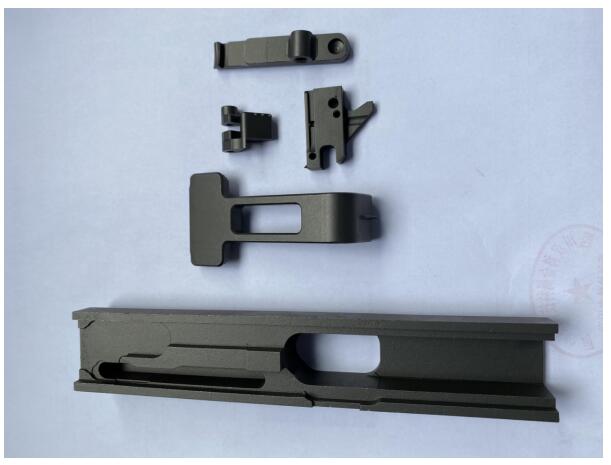
QC:
The quality of the workpiece processed by QPQ depends on whether the infiltration layer meets the technical requirements, including hardness, depth, corrosion resistance and appearance quality. The key to the process is the determination of various parameters, mainly the nitriding temperature and the time of nitriding.
Factors such as the content of cyanate (CNO-) and cyanide (CN-) in the nitriding salt bath, and the pre-heat treatment of the material.
1. Nitriding temperature control
The nitriding temperature is mainly determined according to the type of material, and secondly, the strength requirements of the workpiece should be considered. The nitriding temperature is too low to form a sufficiently deep infiltration layer; the temperature is too high, and the loose layer is serious. Nitriding temperature exceeding the tempering temperature will reduce the hardness of the matrix.
520~530℃ for general tools and dies; 540~550℃ for high-speed steel tools; 570℃ for high-speed steel moulds or wear-resistant parts; 570℃ for structural steel, stainless heat-resistant steel or cast iron parts
2. Nitriding time control
The length of nitriding time mainly depends on the type of workpiece and service conditions. If the time is too short, a sufficient depth of the seepage layer cannot be formed, and if the time is too long, the loosening will be serious. According to the service conditions of the workpiece, the nitriding times used are:
For parts requiring wear resistance, use 120~180 min;
Mainly used for anti-corrosion parts, using 90~120 rain;
Sheet stamping parts, increase
For elastic parts, take 4o~60 rain;
High-speed steel cutting tools take 15~3orain
3.Control of the amount of CNO and CN in the nitriding salt bath
For QPQ treatment, the CNO of the nitriding salt bath should not be less than 30%, and the highest should not exceed 38%. The composition of the salt bath is generally controlled as CNO一=35±2%, and regeneration salt is added once every 8 hours of work. The addition amount is according to the formula: Z=K·△%·w(1【g)
z: adding amount; K: coefficient, generally 1.2. ‘According to the use experience can be adjusted; / x: (3NO one: the difference between the expected value (such as 36%) and the actual value; w: the weight of the salt bath (1 [g) the regeneration salt should be added slowly in batches, and the amount added at one time Salt will overflow due to the violent reaction. If the amount of CN in the salt bath is too high, it should be reduced to the process regulations in time range.
4. Pre-heat treatment of different materials
The design engineer chooses the material reasonably according to the service status of the parts. Low-carbon steel and low-carbon alloy steel are generally normalized, and medium-carbon steel and medium-carbon alloy steel should be quenched and tempered. For pre-heat treatment requirements, see
Literature [cited. Before nitriding, the organization level of the quenched and tempered parts is divided into 5 levels according to the number of free iron cord bodies in the tempered sorbite, general parts 1 to 3 are qualified, and important parts 1 to 2 are qualified. For workpieces with high deformation requirements, tempering at 550-600°C is required before fine grinding to eliminate machining stress.
5.Appearance quality control
The surface of the workpiece after QPQ salt bath compound treatment is black or blue-black.
Inspection method: Under the illuminance of 500Lx, the surface color should be relatively uniform and consistent, and there should be no obvious mottling, rust, or redness when observed with the naked eye at a distance of 300 mm from the lamp.
Do not check the appearance of the workpiece under strong sunlight outdoors. For roughness requirements, use a roughness meter to test. It is found in production that when the process control is not good, the workpiece is prone to blooming and redness, which affects the appearance of the workpiece. In order to improve the appearance quality of the workpiece and make it consistent in color, the following measures need to be taken:
6. Control the cleanliness of molten salt
The slag should be removed regularly. When there are too many fine-grained slag suspended in the nitriding salt bath and the salt bath turns black and gray, the slag filter should be used in time to filter the slag, and new salt should be replaced if necessary.
7. Strictly implement the pre-cleaning of the workpiece
Oil stains and deposits on the surface of the workpiece should be removed, and rusty workpieces should be pickled or sandblasted to remove rust stains. Practice has proved that the quality of pre-processing has a great impact.
8. Remedial measures
Slight redness on the surface of the workpiece can be removed by wiping; the more serious ones should be reworked.
9. Final quality control
10. Use the same material to control the hardness and effective hardened layer depth, and the same pre-heated sample, and the workpiece
Together, the microhardness and depth are inspected after QPQ treatment to meet the requirements of the process regulations. For small pieces, samples can be taken in kind.
Corrosion resistance test
Use 10~kCuSO4 solution to test the non-edge corners of the workpiece, and no copper will be precipitated in 30 minutes, which means that there is a dense r,ao4 oxide film, a complete nitriding layer, and the anti-rust ability meets the requirements.
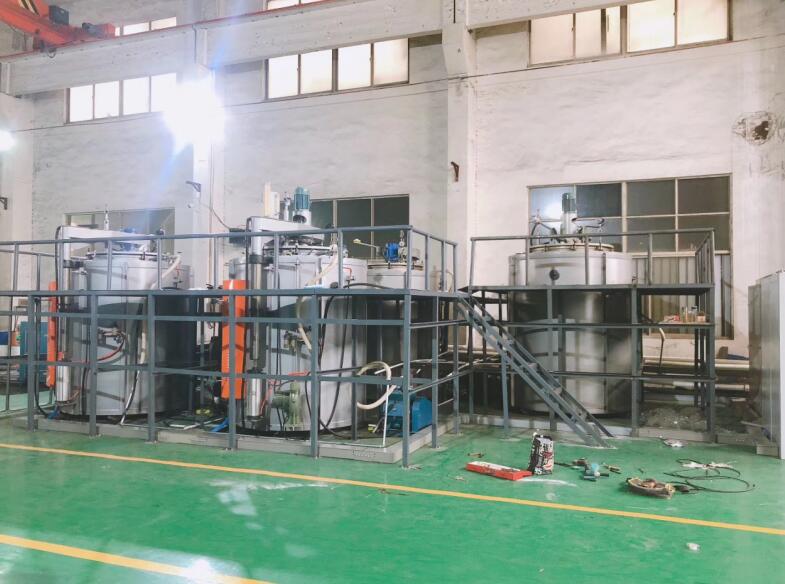
The Necessity Of Vacuum Pressure Equipment Impregnation Varnish Gas Nitriding And Nitrocarburizing Improvement of Cementation Process for 20Mn2 Automobile Snow Chains

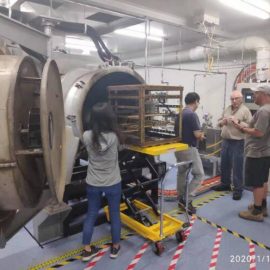
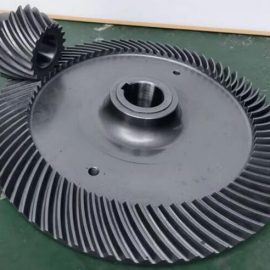
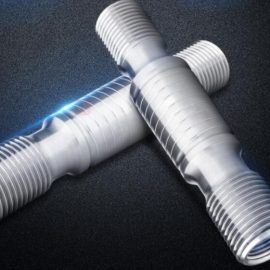
Contact us
Your email address will not be published. Required fields are marked *